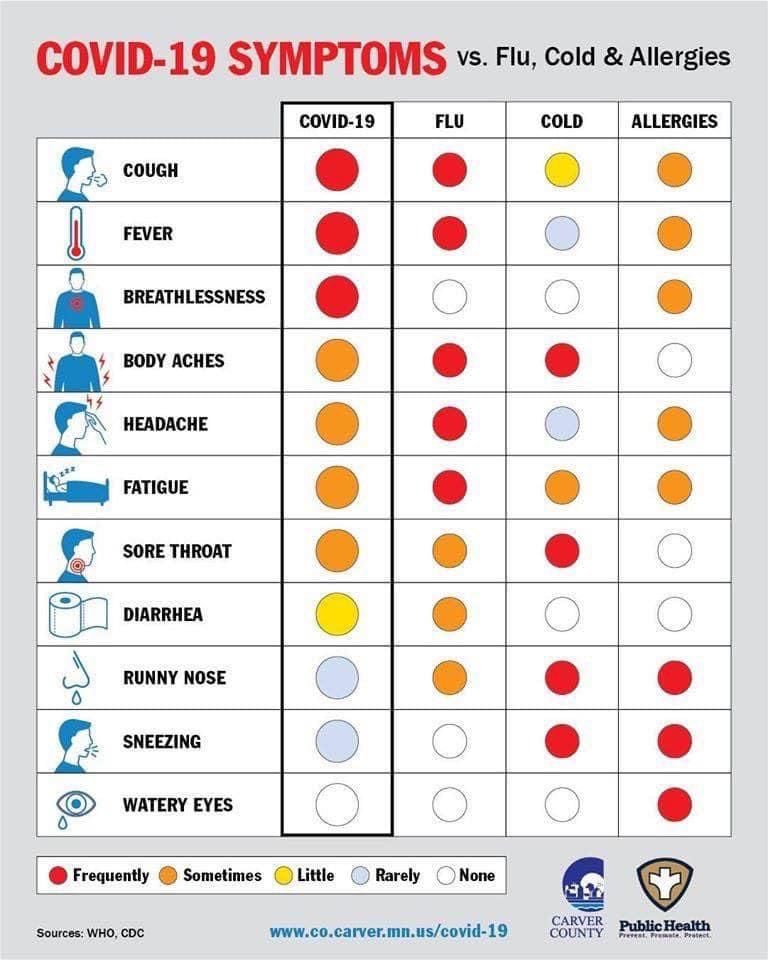
GettyA hospital worker leaves a tent set up for patient triage in Lombardy, Italy.įor those who ended up in the hospital, “the most common symptoms on admission were fever and cough, followed by sputum production and fatigue,” according to the research study “Clinical course and risk factors for mortality of adult inpatients with COVID-19 in Wuhan, China: a retrospective cohort study.” Very few had chest tightness or other respiratory symptoms,” she wrote, adding that the illness lasted from 10-16 days. Only a very few of us had a mild itchy cough.

Once the fever is gone some were left with nasal congestion, sore throat. Some of her friends had other symptoms, though. I had a fever that spiked the first night to 103 degrees and eventually came down to 100 and then low grade 99.5.” … Based on 55924 laboratory confirmed cases, typical signs and symptoms include: fever (87.9%), dry cough (67.7%), fatigue (38.1%), sputum production (33.4%), shortness of breath (18.6%), sore throat (13.9%), headache (13.6%), myalgia or arthralgia (14.8%), chills (11.4%), nausea or vomiting (5.0%), nasal congestion (4.8%), diarrhea (3.7%), and hemoptysis (0.9%), and conjunctival congestion (0.8%).Įlizabeth Schneider and some of her friends tested positive for COVID-19, and she has described on Facebook how the symptoms progressed, writing that the symptoms started with a “headache, fever (for first 3 days consistently and then on and off after 3 days), severe body aches and joint pain, and severe fatigue. Symptoms of COVID-19 are non-specific and the disease presentation can range from no symptoms (asymptomatic) to severe pneumonia and death. There is no treatment specifically approved for people who have COVID-19,” the CDC says. “Most people have mild illness and are able to recover at home without medical care. In addition, some studies have found gastrointestinal distress in COVID-19 patients. Shortness of breath or difficulty breathing.Symptoms can vary, but the Centers for Disease Control and Prevention lists these common signs of COVID-19: Some studies have found that symptoms start to worsen around day 5 for some patients. GettyYes, headache can be an early symptom of COVID-19.Īccording to NBC News, the first days after symptom onset often present as “minor physical complaints - slight cough, headache, low-grade fever.”īrigham and Women’s Hospital reports that symptom presentation “can be extremely varied most common is a non-specific flu-like illness.”


 0 kommentar(er)
0 kommentar(er)
